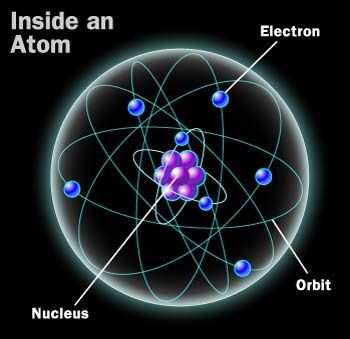Dalton proposed a theory of Indivisibility of Atom, during 1808. 1911, Rutherford proved that the atoms consist of one more particle, whom he named Proton because it was positively charged. During 1932, James Chadwick proved the presence of a Neutron in the atom. Because it had no charge, it was named as Neutron.
But, Bhagavata Purana (written around 3100 BCE) describes atom as Paramanu and each Anu (molecule) consisting of atleast two Paramanu.
caramaH sad-visheShANAm aneko .asaMyutaH sadA |
paramANuH sa viGYeyo nR^iNAm aikya bhramo yataH || 3.11.1
The material manifestation’s ultimate particle, which is indivisible and not formed into a body, is called the atom. It exists always as an invisible identity, even after the dissolution of all forms. The material body is but a combination of such atoms, but it is misunderstood by the common man.
sata eva padArthasya svarUpAvasthitasya yat |
kaivalyaM parama-mahAn avisheSho nirantaraH | |3.11.2
Atoms are the ultimate state of the manifest universe. When they stay in their own forms without forming different bodies, they are called the unlimited oneness. There are certainly different bodies in physical forms, but the atoms themselves form the complete manifestation.
The Parama-Mahan is still more subtler than Paramanu.
The Parama Mahan is unique, has no difference, no spacing and leaves behind nothing.
However, majority of Hydrogen atoms have only electrons and protons, but no neutrons.
evaM kAlo .apy anumitaH saukShmye sthaulye ca sattama |
saMsthAna-bhuktyA bhagavAn avyakto vyakta-bhug vibhuH || 3.11.3
In the same way time also has its discrete divisions, which comprise its gross form and this can be measured by the movement and combination of particles; viShNu is that which is unmanifest, existing in movement and in potential.
sa kAlaH paramANur vai yo bhu~nkte paramANutAm |
sato .avisheSha-bhug yas tu sa kAlaH paramo mahAn || 3.11.4
Those discrete units of time, which are verily further indivisible, correspond to the time required by a paramANu to cover the space equivalent to a paramANu; this is verily the primal, supreme time.
aNur dvau paramANU syAt trasareNus trayaH smRtaH |
jAlArka-rashmy-avagataH kham evAnupatan agAt || 3.11.5
Two paramANus are combine to form an aNu, and 3 combine to form a trasareNu; the rays of light emerging from a mesh can make these [trasareNus] move up in empty space.
Bhagavata states that the Paramanus never join each other, only by coming close together they produce an illusion of a solid matter, which has specific properties. It is now accepted by the science that an atom of an element has some specific properties but its Subatomic particles have no such properties.
Its is now proved by the science that the subatomic particles are not really joined to each other, they are far away from each other. Proton of an atom is at a distance of 40,000 [forty thousand] times the diameter of it from its Electron.
Bhagavata Purana has correlated the matter with the time, just like the space-time continuam of the modern science. Time is unmanifested (Avyakta), but it enjoys the manifest world (Vyaktabhuk). It comes into existence in a special way, so it is called as ‘ Vibhu’. The finest unit of time is named as Paramanu, which equals to a millionth of a second. To be precise, a Paramanu of time is 0.000032 seconds, according to the Bhagavata.
The theory of the Paramanus proposed by the Bhagavata is now accepted by the modern science, but the ‘Parama Mahan’ is not yet accepted by the science. A Paramanu keeps behind some ‘thing’, if broken ; but the Parama Mahan will not keep any ‘thing’ behind, except itself. That Unique thing is called as ‘Kaivalya’ (nirvana/salvation/moksha), which is the unique, ultimate Reality.
Vishnu Sahasranama (written in the Shanti Parva of the Mahabharata) gives the meaning of Vishnu as : Veveshti Vyaapnoti iti Vishnuh – That which pervades everywhere is Vishnu.
It is known that atoms don’t exist independently and they exist as molecules, which are spread everywhere to make up the matter appear in different shapes and forms.
Siva is described in Tantra books as the one who is in Anu-Poorva sthiti (pre-atomic stage).
In pre-atomic stage, an unstable atom has an excess electron or proton and this means, Siva exists in the form of atomic energy which flows, and these atoms makeup molecules, which ultimately appears like matter.
This clearly explains the line ‘Sivaya Vishnu Roopaya, Siva Roopaya Vishnave | Sivascha hridayam Vishnor, Vishnascha hridayam Sivaha ||’
Ancient literature like Lakshmi Tantra also suggests that Paramatma, the Supersoul in the heart of everyone through whom all Avatars come to material universe, is lying on that Milk ocean (Milky Way/Galaxy). So Paramatma is in every atom and heart of all souls in 8400000 kinds(species) of material bodies, with two souls in each heart called jivaatma and Paramatma.
